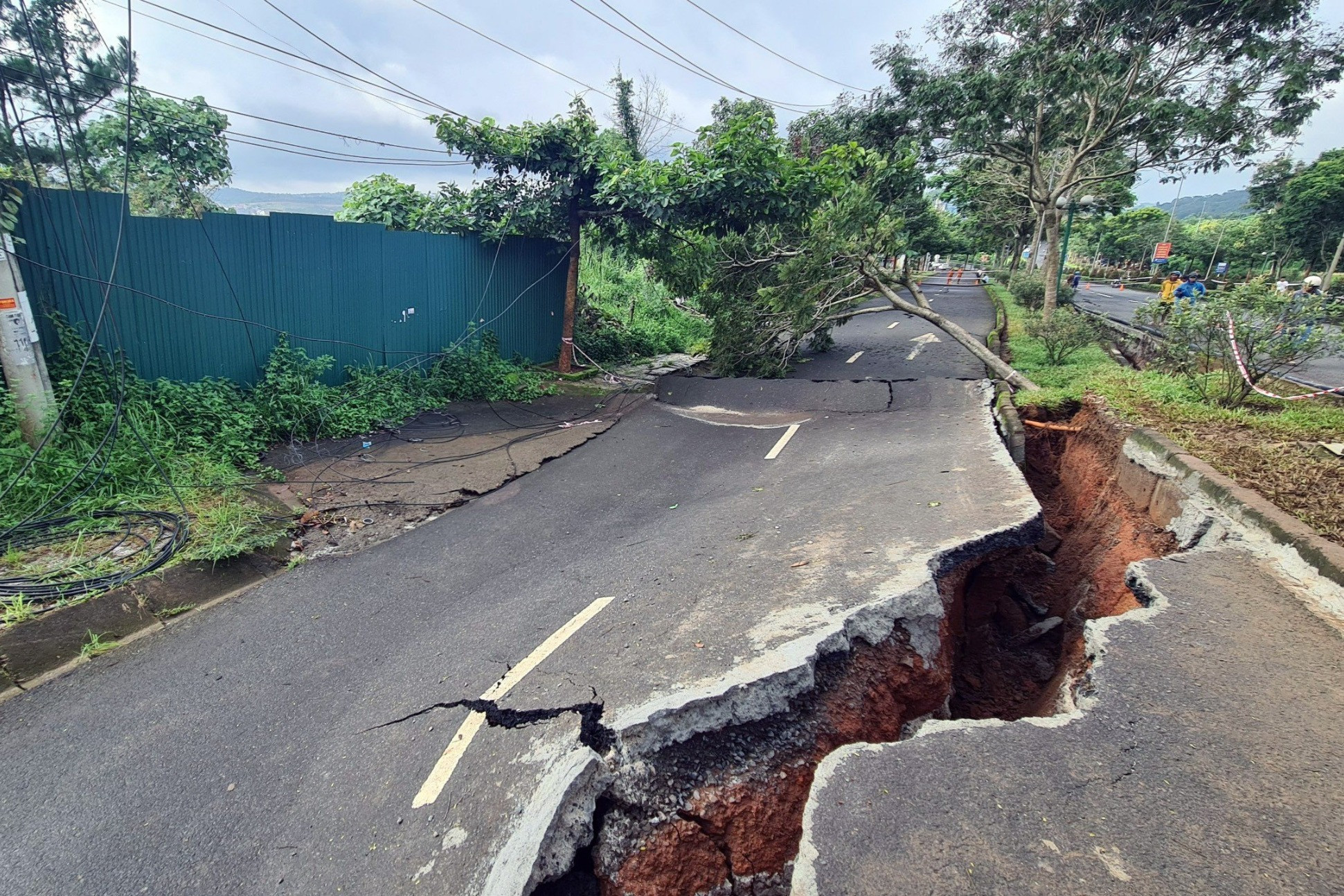
What are the reasons behind the recent landslides occurring in the provinces of the Central Highlands?
Climate change causes natural disasters to become unusual in time and intensity. Rains, floods and landslides occur every year, but they are unusual this year. They are more seen in some places because of the influence of El Nino. Landslides rarely occur in the Central Highlands, but the phenomenon has occurred in many places in the area this year, causing damage to people and property.
In any place where there is prolonged heavy rains and big winds, the soil and rocks will become saturated, which leads to a decline in strength and increase in weight in the earth. When water saturates soil and rock, the stability of the slopes will decrease and the risk of landslides will be high.
To have more space for development, humans clear the way to make roads and houses, and build hydropower reservoirs, which makes the slopes of hills and mountains ‘lose their legs’.
As soil structure changes, in case of heavy rain, the risk of landslides will be higher. The landslides in the Central Highlands in recent days showed this clearly.
All these factors directly cause natural disasters. If the rain is not heavy and intermittent, and the soil and rocks are not saturated, disasters won’t occur. But if it rains heavily for a long time, landslides will likely happen.
Is the use of forestland to grow trees for timber or for fruits such as durian, pomelo and jackfruit the reason that causes landslides and subsidence in the Central Highlands during the rains?
Natural forests have a very thick vegetation cover, which has the function of retaining water, helping water penetrate deep into the ground. In addition, natural forests prevent water from flowing quickly downstream and not accumulating into downstream floods. Perennial roots also increase soil durability.
The deforestation to grow perennial crops will lead to loss of the vegetation cover layer and the growing of industrial crops. And fruit trees won’t help create a vegetation cover like natural forests. This leads to erosion and landslides in mountainous areas.
The growing of durian plants at Bao Loc Pass is one of the reasons behind the landslide. However, I don’t think this was the major reason, because the orchard has existed for a long time and it appeared in the 1985-1990s. The major thing was that the slopes lost ‘footing’ during the road widening.
The recent landslides in the Central Highlands have reminded us of the disaster in Rao Trang 3 hydropower plant in Phong Dien district in Thua Thien - Hue which occurred in October 2020 and killed 13 soldiers and many workers. What are the common characteristics of the landslides in mountainous areas in recent years?
The landslide cases in recent years all have been affected by people’s daily activities, including the Rao Trang 3 case. This shows that when people impact nature, we will have to bear serious consequences as the reaction of nature to people.
Of course, we need to have an impact on nature, but if we do this in a cautious way, the consequences will be less serious.
What are do you think are the solutions to fight and mitigate the consequences of natural catastrophes?
Every time landslides occur, the central and local government immediately takes action to solve problems. However, if we can do the forecasting well, we will be able to minimize damages.
To mitigate natural disasters, relevant agencies have to conduct studies and survey the situation to assess the risks and zone warning areas.
The results of the surveys need to be forwarded to local authorities so that they can consider when building local development plans. In addition, localities need to prepare safe places for people to evacuation in case of emergency. It is necessary to promote propaganda campaigns and prevent people from chopping down trees and forests to develop their gardens and farms.
Quang Phong - Bao Khanh